I had dreams of making myself a complete set of 1860s undergarments for the HSF ‘White’ challenge, but since I didn’t get the Polly / Oliver skirt done for ‘Literature’ it takes priority and will be my ‘White’ entry.
I’m using these two mid 1880s images as my inspiration for the Polly Oliver skirt:
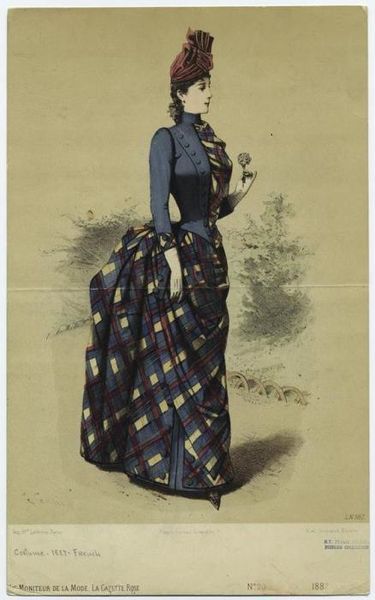
La Moniteur de la Mode, 1887
The first one is my primary inspiration – the plaid area will be white in my version, and the blue area will be the last of my red jacquard. Plus, there will be the last of my buttons, and some gold braid used.
I am, however, tickled at how close the bodice of this yachting outfit is to the Polly / Oliver jacket. And I rather like the layers of pleats that you can glimpse in the underskirt, and I may borrow that in some way. Also, isn’t the flag-inspired dress fabulous?

1887, Godey’s Ladies Book
I’m basing my pattern and construction for the skirt on the 1887-9 day dress from the Victoria & Albert featured in Janet Arnold’s Patterns of Fashion.
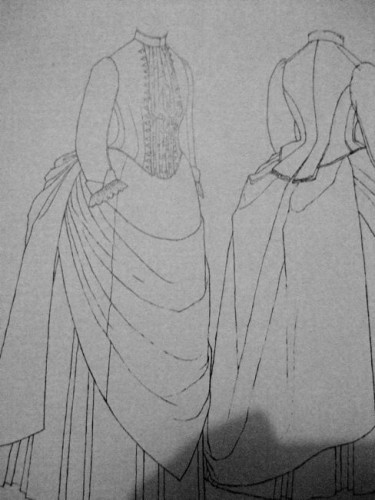
The date, shape and details are exactly right, and I’ve always been intrigued by the self-boned underskirt of the pattern. I’m hoping it will be strong enough for me to wear the skirt without a full bustle. Less layers and weight makes sense for a military-inspired dress. After all, Polly can’t be carrying around an extra bustle on campaign!
I started by sewing the basic underskirt layer. I’m using the same ivory sateen I used for the vest for the all the light coloured portions of the skirt. I stiffened the hem with a length of linen from the inside of an obi.
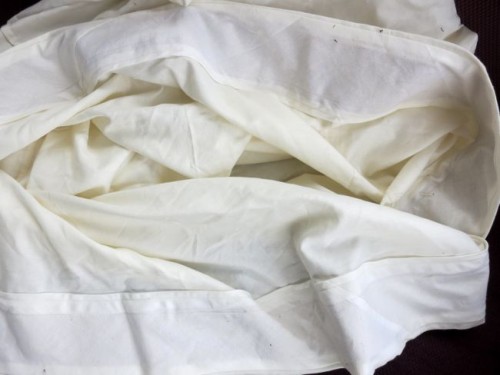
My obi recycling is very green. I stop short of pulling out and using the threads for hand sewing, but everything else gets re-used.
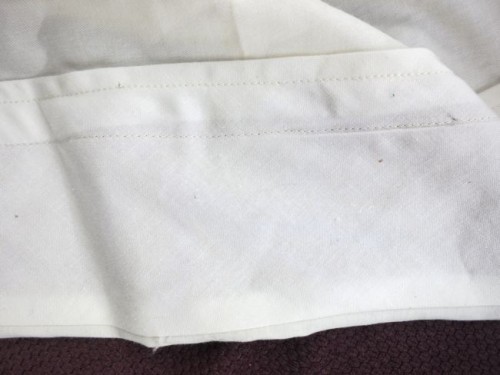
For boning, I’m also recycling: using the bones from a modern commercial crinoline that someone gave me. The steel boning is much lighter and weaker than the stuff I usually use, so I sewed three lines of boning rather than the two on Arnold’s original.
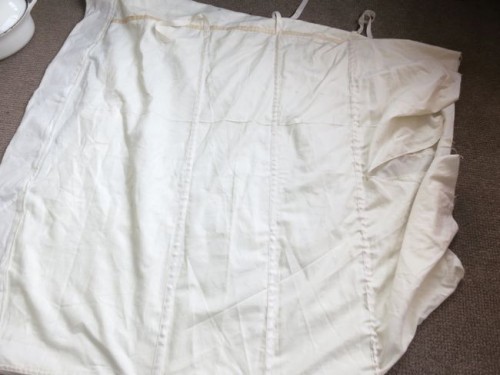
Unfortunately, even with an extra bone, the boning was still far too weak to support a nice curve in the underskirt itself, much less any extra layers, so I had to go back and double the lines of boning, ending up with 6 lines of bones each spaced 4″ apart, rather than 3 spaced 8″ apart.
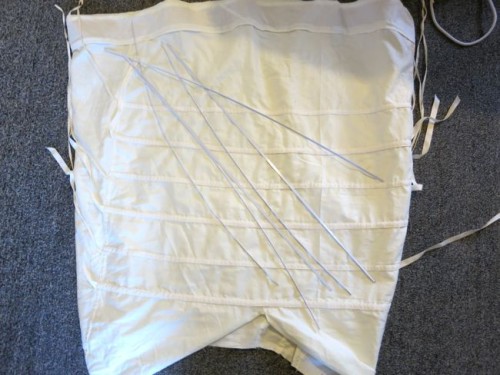
The boning channels are yet another example of green-y/re-use-y/frugality-ness. They are remnants of white cotton that I cut into strips and folded and pressed and rolled on to card stock years ago, just in case they would be useful. And they were!
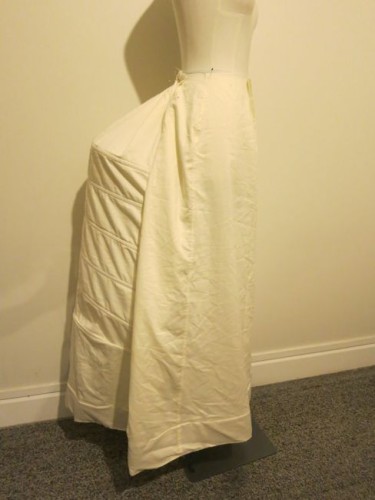
I’m still going to have to wear a small bum-pad or short bustle to give myself the real “oomph” from the back that you see in mid-1880s skirts, but overall I’m pleased with how this is looking (or will look, once I tie all the hoop ties properly, so some of them aren’t pulling more than others).
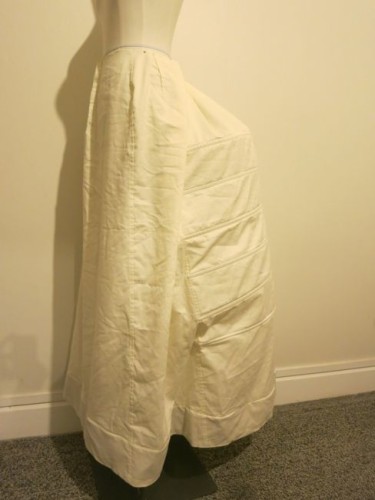
Pleased or not, I don’t think I’ll be using the self-boned underskirt technique for future bustle-era dresses. It’s just so much easier to make them soft and put them over a full bustle.
So now I need to put in my red detail layer, and then my full over-layer, and then the final drape layer, and then gather/pleat the whole top, waistband and fastenings, and then final trim. Easy peasy…
I hope!
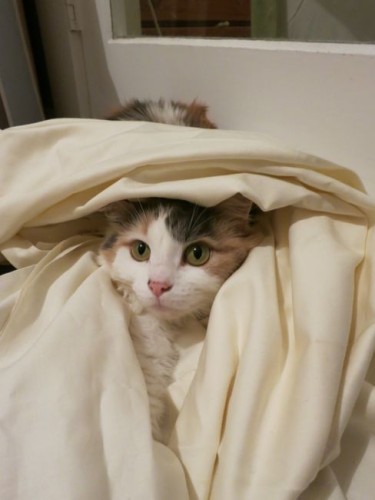

I still see dead people!
It’s looking good!